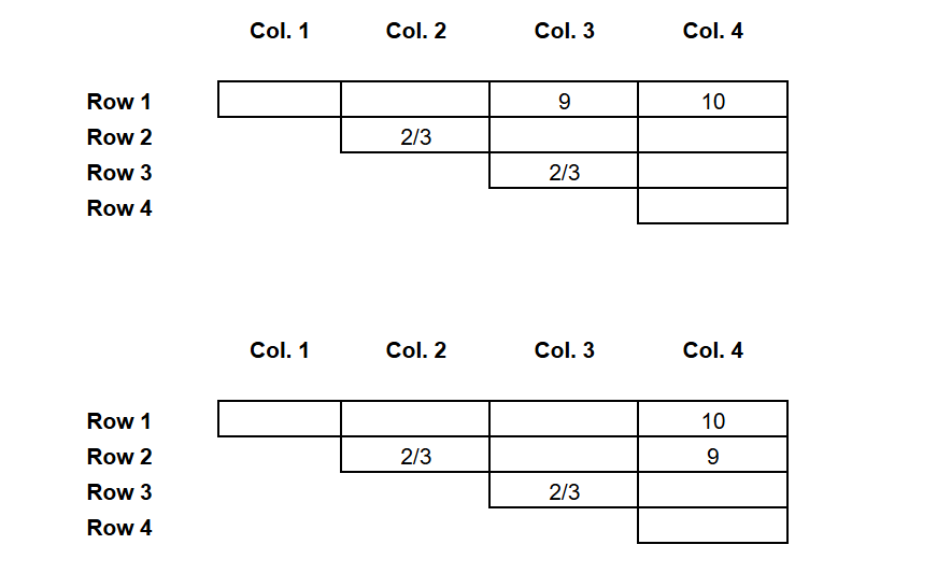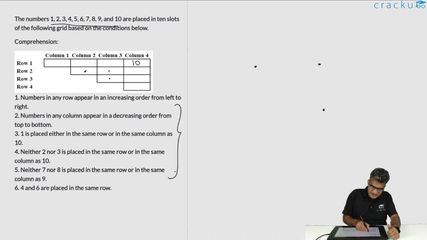Sign in
Please select an account to continue using cracku.in
↓ →
The numbers 1, 2, 3, 4, 5, 6, 7, 8, 9, and 10 are placed in ten slots of the following grid based on the conditions below.

1. Numbers in any row appear in an increasing order from left to right.
2. Numbers in any column appear in a decreasing order from top to bottom.
3. 1 is placed either in the same row or in the same column as 10.
4. Neither 2 nor 3 is placed in the same row or in the same column as 10.
5. Neither 7 nor 8 is placed in the same row or in the same column as 9.
6. 4 and 6 are placed in the same row.
What is the sum of the numbers placed in Column 4?
Correct Answer: 26
We are given that the numbers keep increasing from left to right (clue 1), and the number keeps decreasing from top to bottom (clue 2)
The key takeaway from this is that 10 must be placed in Row 1, column 4, as placing it anywhere else would mean that the number above it, or right to it, must be greater than 10, which is not an option.

Clue 3 says that one is either in the same row or the same column as 10.
The same logic that we used for 10 applies for 1; it must be either in Row 1, column 1, or Row 4, column 4; we don't know which one yet.
We are given that 2 and 3 are not in the same column or row as 10, meaning that they must occupy two spots from (Row 2, Col. 2), (Row 2, Col. 3), and (Row 3, Col. 3)
2 and 3 must be present in Row 2, column 2 or Row 3, column 3, as there is no number smaller than it to be in the cell left to it.
Clue 6 says that 4 and 6 are in the same row; this can be rows 1, 2, or 3.
Clue 5 is a good starting point.
Once we found the position of 10, the only positions possible for 9 are R1C3 or R2C4

If 9 is placed in R2C4, 7 and 8 must be placed in row 1.
Clue 6 says that 4 and 6 are in the same row, but with 7 and 8 in row 1, no rows are left with two spaces. Hence, 9 can not be in R2C4, and the arrangement must be:

7 and 8 must be in column 4, occupying R3C4 and R2C4, respectively.
Hence, 4, 6 must be in row 1:

The sum of numbers in the 4th column is 10+8+7+1 = 26
Therefore, 26 is the correct answer.

Click on the Email ☝️ to Watch the Video Solution
Create a FREE account and get:
Educational materials for CAT preparation